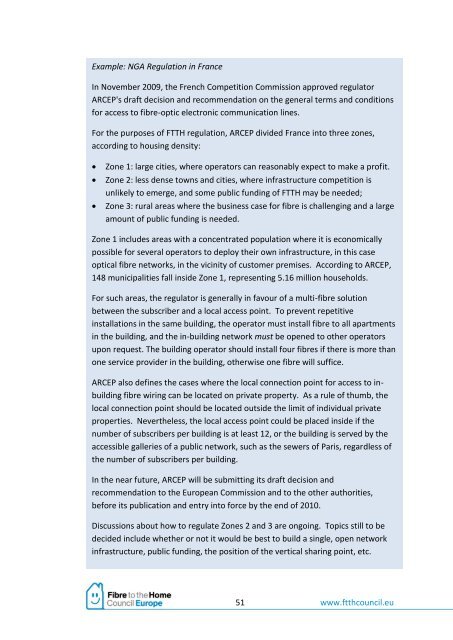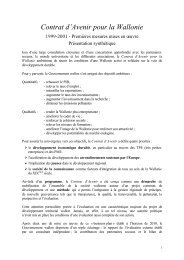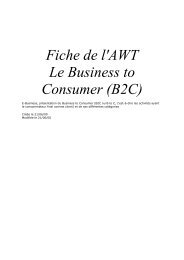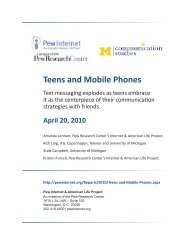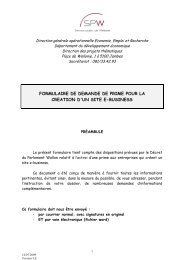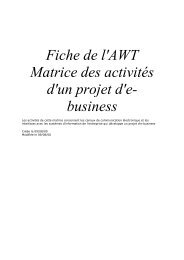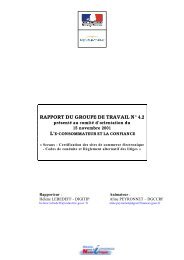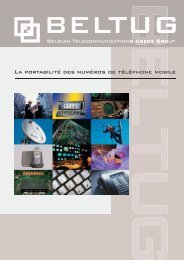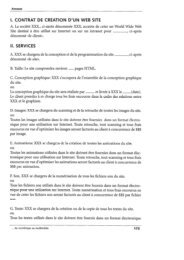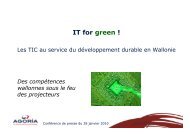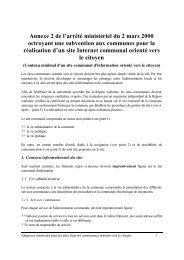You also want an ePaper? Increase the reach of your titles
YUMPU automatically turns print PDFs into web optimized ePapers that Google loves.
Example: NGA Regulation in France<br />
In Novem<strong>be</strong>r 2009, the French Competition Commission approved regulator<br />
ARCEP's draft decision and recommendation on the general terms and conditions<br />
for access to fibre-optic electronic communication lines.<br />
For the purposes of <strong>FTTH</strong> regulation, ARCEP divided France into three zones,<br />
according to housing density:<br />
� Zone 1: large cities, where operators can reasonably expect to make a profit.<br />
� Zone 2: less dense towns and cities, where infrastructure competition is<br />
unlikely to emerge, and some public funding of <strong>FTTH</strong> may <strong>be</strong> needed;<br />
� Zone 3: rural areas where the business case for fibre is challenging and a large<br />
amount of public funding is needed.<br />
Zone 1 includes areas with a concentrated population where it is economically<br />
possible for several operators to deploy their own infrastructure, in this case<br />
optical fibre networks, in the vicinity of customer premises. According to ARCEP,<br />
148 municipalities fall inside Zone 1, representing 5.16 million households.<br />
For such areas, the regulator is generally in favour of a multi-fibre solution<br />
<strong>be</strong>tween the subscri<strong>be</strong>r and a local access point. To prevent repetitive<br />
installations in the same building, the operator must install fibre to all apartments<br />
in the building, and the in-building network must <strong>be</strong> opened to other operators<br />
upon request. The building operator should install four fibres if there is more than<br />
one service provider in the building, otherwise one fibre will suffice.<br />
ARCEP also defines the cases where the local connection point for access to inbuilding<br />
fibre wiring can <strong>be</strong> located on private property. As a rule of thumb, the<br />
local connection point should <strong>be</strong> located outside the limit of individual private<br />
properties. Nevertheless, the local access point could <strong>be</strong> placed inside if the<br />
num<strong>be</strong>r of subscri<strong>be</strong>rs per building is at least 12, or the building is served by the<br />
accessible galleries of a public network, such as the sewers of Paris, regardless of<br />
the num<strong>be</strong>r of subscri<strong>be</strong>rs per building.<br />
In the near future, ARCEP will <strong>be</strong> submitting its draft decision and<br />
recommendation to the European Commission and to the other authorities,<br />
<strong>be</strong>fore its publication and entry into force by the end of 2010.<br />
Discussions about how to regulate Zones 2 and 3 are ongoing. Topics still to <strong>be</strong><br />
decided include whether or not it would <strong>be</strong> <strong>be</strong>st to build a single, open network<br />
infrastructure, public funding, the position of the vertical sharing point, etc.<br />
51 www.ftthcouncil.eu


